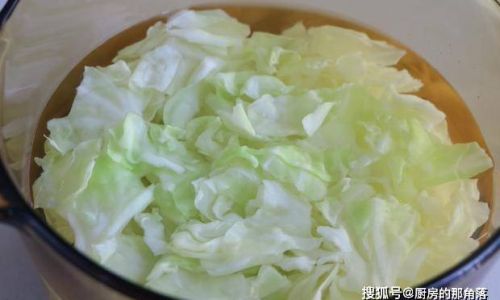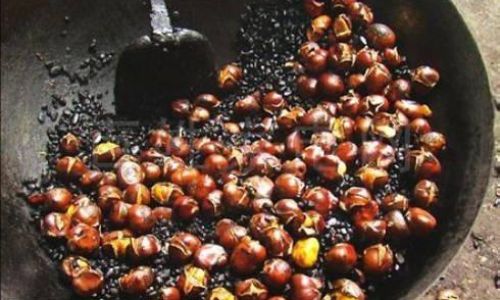Table of content
Cabbage, a leafy green (or purple) vegetable often relegated to the sidelines of grocery carts, deserves a spotlight moment. Despite its reputation as a mundane, even boring, ingredient, cabbage is a culinary chameleon—capable of transforming into dishes that are both comforting and gourmet with minimal effort. This article explores why cabbage is a kitchen essential, offering a blend of simplicity, nutrition, and versatility that elevates it far beyond its humble exterior.
The Unassuming Superfood: Nutritional Benefits of Cabbage
Before diving into recipes, it’s essential to acknowledge cabbage’s nutritional prowess. Packed with vitamins, minerals, and fiber, this cruciferous vegetable is a low-calorie powerhouse. A single cup of raw cabbage contains just 22 calories yet delivers 85% of the daily recommended intake of vitamin K, 54% of vitamin C, and significant amounts of folate, manganese, and vitamin B6. Its high fiber content aids digestion, while antioxidants like sulforaphane and indole-3-carbinol combat inflammation and may reduce the risk of chronic diseases.
But cabbage’s appeal isn’t limited to its nutrient profile. Its crisp texture and mild, slightly sweet flavor make it an ideal canvas for bold seasonings or a standalone star in minimalist preparations. Whether raw, sautéed, roasted, or fermented, cabbage adapts to nearly every cooking method, proving that simplicity doesn’t equate to blandness.
Culinary Versatility: From Crisp Salads to Hearty Stews
One of cabbage’s greatest strengths lies in its adaptability. It thrives in raw preparations, wilted dishes, and long-cooked braises alike. Here’s a breakdown of how to harness its potential:

Raw Cabbage: Crisp and Refreshing
Shredded cabbage forms the base of coleslaw, a picnic classic that can be elevated with creative twists. Toss thinly sliced cabbage with grated carrots, apples, and a tangy dressing of apple cider vinegar, Dijon mustard, and honey for a vibrant side dish. For a spicy kick, add jalapeños or a dash of sriracha.
Alternatively, opt for an Asian-inspired slaw by combining cabbage with cilantro, mint, edamame, and a dressing of lime juice, fish sauce, and sesame oil. The result is a refreshing salad that pairs beautifully with grilled meats or noodles.
Sautéed Cabbage: Caramelized Sweetness
Sautéing cabbage mellows its sulfuric edge, replacing it with a subtle sweetness. Heat olive oil or butter in a skillet, add thinly sliced cabbage, and cook over medium heat until tender and golden. Enhance with garlic, onions, or bacon for depth. A splash of balsamic vinegar or a sprinkle of caraway seeds elevates the dish further.
This method works wonders with red cabbage too, which takes on a jewel-toned hue when cooked. Pair it with roasted pork or sausages for a hearty meal, or toss it with pasta and Parmesan for a quick vegetarian dinner.
Roasted Cabbage: Crispy Edges, Tender Centers
Roasting cabbage wedges transforms them into crispy, caramelized delights. Slice a head of cabbage into thick wedges, brush with olive oil, and roast at 425°F (220°C) until the edges brown. Season with salt, pepper, and smoked paprika, then finish with a squeeze of lemon. The contrast between the crispy edges and tender interior is irresistible.
Braised Cabbage: Comfort in a Pot
Braising cabbage with broth, wine, or vinegar results in a meltingly tender dish. Simmer cabbage wedges in a mixture of vegetable broth, apple cider vinegar, and brown sugar for a sweet-and-sour flavor. Add onions, apples, or prunes for complexity. This dish shines alongside mashed potatoes or roasted chicken.
Fermented Cabbage: The Magic of Sauerkraut and Kimchi
Fermentation unlocks cabbage’s probiotic potential, creating tangy, gut-healthy sides like sauerkraut and kimchi. To make sauerkraut, shred cabbage, salt it to draw out moisture, and pack it into a jar. Let it ferment at room temperature for a week, then refrigerate. The result is a crunchy, sour condiment that elevates sandwiches, salads, and hot dogs.
Kimchi, Korea’s spicy fermented cabbage, follows a similar process but includes chili flakes, ginger, garlic, and fish sauce. It’s a fiery addition to rice bowls, fried noodles, or grilled meats.
Global Inspirations: Cabbage in World Cuisines
Cabbage’s humble nature belies its global popularity. Let’s explore how different cultures incorporate this vegetable into their traditions:

- Eastern Europe: Stuffed cabbage rolls (golabki in Polish, holubtsi in Ukrainian) feature cabbage leaves wrapped around seasoned meat and rice, simmered in tomato sauce.
- Ireland: Boiled cabbage, often paired with corned beef and potatoes, is a St. Patrick’s Day staple.
- China: Stir-fried cabbage with garlic and soy sauce is a quick, flavorful side dish.
- Germany: Sauerkraut is a national treasure, served with sausages, pork, or potatoes.
- Mexico: Cabbage adds crunch to tacos, tostadas, and sopes, often dressed with lime and chili powder.
These dishes highlight cabbage’s ability to anchor both humble peasant meals and festive feasts.
Tips for Selecting and Storing Cabbage
To maximize cabbage’s potential, start with a fresh head. Look for firm, heavy vegetables with crisp leaves free of blemishes. Store it in the refrigerator’s crisper drawer, wrapped in plastic, where it can last up to two months.
For quick meals, pre-shred cabbage and store it in an airtight container. Frozen cabbage works well in soups and stews but becomes soggy when thawed, so reserve it for cooked dishes.
Overcoming Common Cabbage Critiques
Despite its merits, cabbage faces criticism. Some find its sulfuric aroma off-putting when overcooked. To mitigate this, avoid boiling cabbage for too long; instead, opt for quicker cooking methods like sautéing or roasting. Adding an acidic ingredient like vinegar or lemon juice during cooking also helps neutralize odors.
Another gripe is its texture. Overcooked cabbage turns mushy, but when cooked al dente, it retains a pleasant crunch. Experiment with cooking times to find your preference.
Cabbage: A Budget-Friendly Hero
In an era of rising food costs, cabbage shines as an affordable staple. A single head can yield multiple meals, stretching grocery budgets without sacrificing flavor or nutrition. Its long shelf life reduces waste, making it a smart choice for frugal cooks.
Conclusion: Embrace the Cabbage Revolution
Cabbage’s simplicity is its superpower. It requires no peeling, no intricate prep, and minimal seasoning to shine. Yet, its adaptability allows it to star in gourmet dishes or humble home-cooked meals. Whether you’re a novice cook or a seasoned chef, cabbage deserves a place in your kitchen.
Next time you pass by that unassuming head of cabbage at the market, reconsider. With a knife, a pan, and a dash of creativity, you can turn this overlooked vegetable into a meal that’s both effortless and extraordinary. After all, great food doesn’t demand complexity—sometimes, it’s the simplest ingredients that deliver the most profound satisfaction.






0 comments